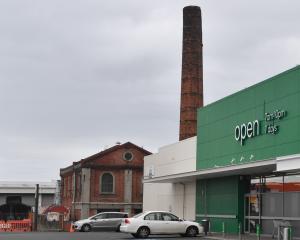With 70% of New Zealand's known mineral wealth under Crown or Department of Conservation land, the industry and environmentalists must forge an accord acceptable to both.
If nothing else, the global recession has proved just how important minerals are to economies and New Zealand has for too long been an underachiever, considering that on a per capita basis the mineral sector ranks us among the wealthiest countries in the world.
The short-term potential of doubling the resource sector's value, from a record more than $2 billion in value in 2008 to more than $4 billion, is a real prospect as metals enter a second phase of resurgence as the global recession shows tentative signs of weakening.
Gold, as the go-to investment in troubled times, hit a record $US1033 ($NZ1504) in March 2008, neared $US1000 again last February and with foreign exchange on the day prompted a record $NZ1886 per ounce, unlike massive declines in most commodities.
However, while the mining sector in New Zealand may be entering a new era, environmentalists and the mining companies may find they both have to compromise a lot more to achieve their respective goals.
Those opposing mining applications will have to be more focused and succinct and may have to go directly to the relatively expensive Environment Court, while mining companies can expect reams of conditions within approvals and, for the first time, the possibility of fines of up to $600,000 for transgressions.
About 250 delegates from across New Zealand and Australia attended the New Zealand branch of the Australian Institute of Mining and Metallurgy (AusIMM) conference in Queenstown last week.
Recent New Zealand AusIMM conferences, while buoyed by the worldwide commodities boom at the time, were sullen affairs politically as the Labour-led government and Green Party were seen to be doing little to enthuse the sector and promote growth.
Much was at stake for the resource sector at the last election.
Most in the industry consider the appointment of Cabinet No 3 Gerry Brownlee as the Minister of Energy and Resources a coup, although there is dissatisfaction at the workload he shoulders.
What Mr Brownlee told delegates at the conference was music to their ears: access to land issues would be revisited, Crown and Department of Conservation land which covers hundreds of millions of dollars of minerals would potentially be freed up, and bold changes to the contentious RMA are proposed.
Subsequently, many at the conference were talking of a new era.
The feeling was summed up by New Zealand AusIMM branch chairman Murray Stevens after the conference.
"This will be a renaissance for the industry.
"New Zealand has finally got a government which wants to see development of the mineral sector in a sustainable fashion," Mr Stevens said.
He was asked how he thought environmentalists would react to the proposed RMA amendments, which are sure to prompt bitter and widespread debate in the months ahead.
"The New Zealand mining sector has got an environmental record second to none in the world, which speaks for itself," he said.
While environmentalists may criticise the proposed amendments to the RMA as giving the mining sector carte blanche, the Select Committee has recommended no change to proposals to remove non-complying activity status, but a move to restrict who can appear on behalf of public interests is on the table.
Simpson Grierson RMA specialist Michelle van Kampen said: "Many developers, including those in the mineral industry, have in the past been faced with parties who are not affected by a proposal but have nonetheless participated and held up the resource management process."
While the streamlining amendments to the RMA are likely to go to go Parliament some time next month, the first phase could be passed by the end of the year, with a second phase looked at early next year.
The second phase includes issues such as design of the Environmental Protection Authority, water allocation and RMA alignment, with Acts covering conservation, forests, building and historic places.
Labour conservation spokesman David Parker said in a statement coal and lignite were the cause of climate change and allowing increased mining in the Doc estate, or at all in national parks, was "lunacy".
"We urge the Government to hold extensive public consultation before allowing mining in New Zealand's precious national parks and conservation areas," he said.
Dunedin law firm Anderson Lloyd partner Maree Baker outlined some of the changes to the RMA, in a paper titled Nuisance or necessity?, at the conference.
She said while the mining industry had numerous conditions imposed on operations, which could be frustrating, it was important to comply with them rather than face prosecution, convictions and fines, such as the substantial penalty of up to $600,000 for corporates.
"They [fines] will be seen by the courts as an indication from Parliament that they will want to see harsher penalties imposed for breaches of the RMA.
"It is likely this will lead to more severe penalties being imposed across the board by courts," Ms Baker said.
The mining sector has been hard-hit by the credit crunch and subsequent risk aversion by investors, from small start-up explorers putting projects on hold, through to New Zealand's largest producer, Oceana Gold, putting a Philippines gold-copper development in mothballs after unsuccessfully seeking $US185 million in finance.
In New Zealand, the record gold price has opened the floodgates to small private operators who are staking prospecting and mining claims throughout the country.
Of the listed companies, Oceana Gold recently raised $30 million in capital while Glass Earth has signalled a possible capital raising ahead for more than $1 million.
The L&M Group announced at the AusIMM conference it intended raising $A30 million for an aggressive coal seam gas drilling programme in Southland and Otago.
Otago Regional Council chief executive Graeme Martin said Department of Conservation reserves around Otago, which display mining relics, were "monuments to damage", which had prompted communities to rebel against mining.
He told the conference delegates that now he took great pride in pointing out recent mining sites to passengers when driving from Dunedin to Lawrence.
"They can't see them because they have been returned to pasture, which is how it should be," Mr Martin said.
Political lobby group Straterra chief executive Richard Michael said economic prosperity through partnership was key for the sector and the Government and communities had to work together to create a 20-year plan.
Calls for a 20 to 50-year plan were made by many speakers, not least Don Elder of state-owned enterprise and coal producer Solid Energy, who believes lignite alone could become a $10 trillion industry within 20 years, if managed correctly.
"Our environmental credentials have got to be authentic . . . not a Greenies versus miners dynamic, which we have got to get away from," Mr Michael said.
The 2009 AusIMM conference may well be remembered by the mining industry and environmentalists alike as a defining moment for mineral exploration in New Zealand.
Reporter Simon Hartley was a guest of AusIMM at the conference.












